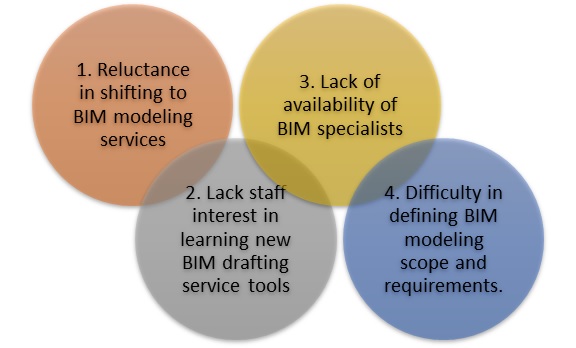|
Getting your Trinity Audio player ready...
|
Hitches affecting the adoption of 3d bim modeling services!!!
Various reasons such as lack of interdisciplinary coordination among the designers, contractors and the bim building services engineers may cause many issues in the architecture, engineering and construction industry like cost and time overruns, process inefficiency and material wastage. Therefore, the government, especially in developed nations, forces the people for the mandate adoption of 3D BIM modeling services for government-funded projects.
Now, the private construction projects also begun to understand the advantages of using information-embedded revit modeling services for design and construction stages and use BIM technology. Even though implementation of modern BIM-enabled workflows can reduce clashes in design and coordination and enhance project efficiency, some key inhibitions and apprehensions are seen.
Reluctance in shifting to BIM modeling services:
Most of the AEC firms have been using the traditional 2D and non-BIM 3D CAD workflow for pre-construction of 3D planning. They are generally reluctant to change their conventional process. Moreover, such firms decide the change to new technology only according to the requirement of the clients.
Lack staff interest in learning new BIM drafting service tools:
The steep learning curve of its tools and their real-life applications specific to disciplines like structural engineering, MEP engineering and architecture is another reason that pushes people back from implanting BIM. Training CAD technicians, who are expert in drafting tools like AutoCAD is another common concern.
Lack of availability of BIM specialists:
There is a perception among certain groups that current projects will suffer during the transition period of BIM and it inhibits people from BIM implementation. A BIM adoption is not just software training, but an overall changing the building conceptualization, design, construction and maintenance is required. Cad managers with a team of CAD technicians are reluctant for the traditional design methods. But, the modern BIM-based projects need BIM managers, who work with discipline-specific representatives to map out BIM phases needed by the client.
Difficulty in defining BIM modeling scope and requirements:
BIM adoption requires the interaction among the design and contracting teams. The MEP sector faces the challenge of defining BIM scope and requirements between the parties involved, as the designers and trade contractors have traditionally handled conceptual design and detailed design individually. The overlap in conceptual design and detailed design is the common challenge that MEP traders and MEP designers face in BIM adoption.
Furthermore, there is a common opinion among the AEC industry that tremendous effort requires to prepare custom detailed content to client’s specifications in order to adopt a full-fledged 3D BIM modeling services for the entire building lifecycle. They believe that even though the clash detection and design can be done using the generic libraries, accurately detailed models are required to use BIM optimally for aspects like time scheduling, quantity take-offs and cost estimation.




Leave a Reply